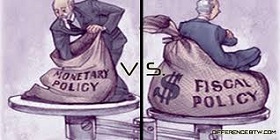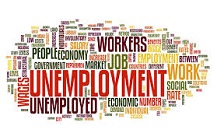Fiscal Policy and Monetary Policy – two tools that run the economy
Whenever the economy suffers from serious problems, like high inflation or periods of recession, the government make several changes in it’s monetary and fiscal policy. We here, the government has increased the taxes, or reduced the interest rate, incresed it’s spending, and etc, etc. But how do we know whether the changes are made in fiscal policy or monetary policy? Which of the one is better for the economy? Or the mix of two should be used to make the ecomomy stable?
Monetary and Fiscal Policy are the two tools of economics that are often used to stabilize the economy. To answer the above questions let’s understand to two in a bit detail manner.
Fiscal Policy
Fiscal Policy generally aims to influence the aggregate demand in the economy. Changes in fiscal policy are in the hands of the government, which includes changes in tax rate or changes in the government spendings.
* In order to accelerate the demand and economic growth, the government will cut down the taxes on various goods and services and will increase its spendings. Alternatively, we can use the term ‘ Expansionary Fiscal Policy of the Government ‘ for the same.
* In order to control the demand or expenditure government chooses the option of ‘ contractionary fiscal policy’ which involves decreasing the spendings by a government and increasing the taxes.
Let’s take a simple example to understand this. In the periods of recession, the government will increase its spendings by borrowing, which will stimulate the supply of money in the economy, thus, helping in creating more jobs. This will further increase the demand, hence wiping out the situation of recession.
Monetary Policy
Monetary Policy generally involves making changes in the interest rate or supply of money in the economy. Central Bank have a direct influence on the working of monetary policy.
For example, if the inflation is moving out of control in the economy, then RBI will increase the interest rate, which will increase the cost of borrowing, thus, reducing the investment and in total, will reduce the aggregate demand in the economy.
After having a bit understanding of both the policies, let’s come to the question – ‘ Which one is better’ or ‘The mix of two is good ‘?
Both the policies have its own limitations. It cannot be clearly stated that which one is better. Depending on the situation, sometimes monetary can prove out to be good and sometime fiscal. But most of the time, government chooses to use mix of these policies and the results are better in this case.





8 Comments. Leave new
Precise and accurate!
Great! That’s very informative 🙂
well written
Great work
well written
Very well explained
great job
Good job.